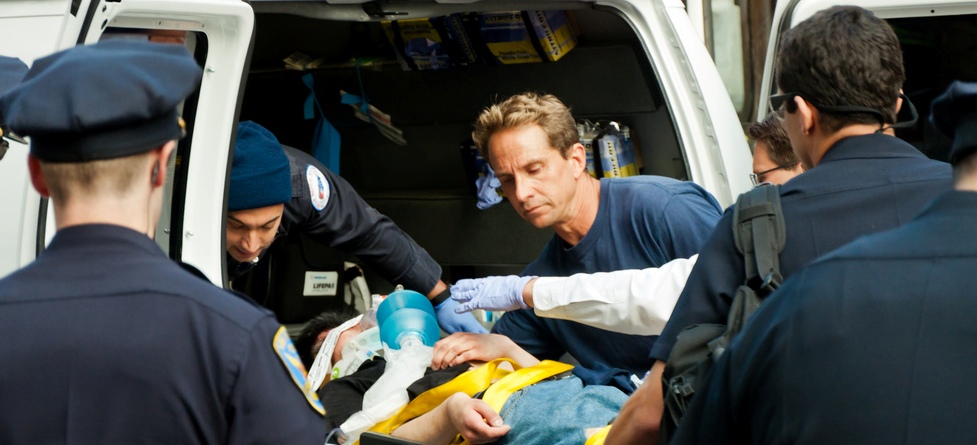The Incident
Definition: An event caused by a natural phenomenon or human activity that requires the intervention of emergency service personnel to prevent or mitigate loss of life and damage to property and the environment.
Call for Assistance
Information to obtain:
- Address/location of the incident.
- Identify the origin of the call (telephone, radio, in-person, etc.)
- Incident type (what is happening)
- Victims (quantity and condition).
- Actions are taken.
Response
When responding to an incident, the following factors should be considered:
- Day of the week (traffic, etc.)
- Time of the day (school, business hours, people at home, etc.)
- Weather (rain, wind, storms, etc.)
- Social disturbances
- Topography (winding roads, etc.)
- Hazardous materials (fuel leaks, radiation, etc.)
- Access routes (freeways, crossings, bridges, height, width, road maintenance, etc.)
- Power lines
- Proper vehicle placement
Types of Incidents
- Motor vehicle collision
- Structural fire
- Natural phenomena
- Water rescue
- Medical emergency
- Hazardous materials
- Structural collapse
- Electrical
- Aircraft accident
5. Scene Size-up
Definition: The evaluation of factors that are used in the decision-making process to establish the strategy and tactics
Ongoing evaluation of the incident begins when the call is received and continues until the incident is successfully mitigated.
5.1 Scene Size-Up Criteria
Using the following criteria for scene size-up, in this order:
What is the current situation? (Determine actual state.)
Where is it going? (Determine potential situation.)
How do I control it? (Determine operations and resources needed.)
5.2 Reporting
The following information should be included in the initial report:
- Address/location
- Type of incident
- Environmental conditions
- Current situation
- Number of victims
- Resources needed
Exercise 3-2: Scene Size-Up
For this exercise, the instructor will be showing you three slides, which you will analyze. You will then be instructed to fill out the forms on the following three pages with the relevant information
Exercise 3-2: Scene Size-Up
Scene Size-up
What is the current situation? (actual state)
Where is it going? (potential situation)
How can we control it? (operations and resources needed)
Guide to Reporting Scene Information (to Dispatch Office) Address/location
Type of incident
Environmental conditions
Problems present
Number of victims Resources needed
Where is it going? (potential situation)
How can we control it? (operations and resources needed)
Guide to Reporting Scene Information (to Dispatch Office) Address/location
Type of incident
Environmental conditions
Problems present
Number of victims
Resources needed
Securing the Scene (Scene size up Fire / Medical)
There are three priorities when Scene Size up or securing the scene:
1) Place your vehicle properly.
2) Isolate and mark the scene.
3) Mitigate risks.
4) Gaining Access
The MFR should always analyze the need for personal protection such as helmet, eye protection, mask, self-contained breathing apparatus, gloves, etc. before attempting to gain access to a patient. And the fire scene size up simulators is good to have the potential grip on your experience.
In case the incident occurs in water, cliffs, etc., the MFR should request assistance from specially trained personnel.
7.1 Basic Tools
Fill in the local names used for the tools listed below:
Pry bar
Pliers
Automatic center punch.
Screwdriver
Tin snips
Hammer
Knife
Rope
Vise grips Axe
Hacksaw
Rubber mallet
Personal protective equipment.
Kelly tool.
7.2 Gaining Access to Buildings
Always look for alternate means of entry. Consider the easiest route for entry and exit based on the situation and the patient’s needs.
Doors.
Windows.
7.3 Gaining Access to Vehicles Using Basic Tools
Generally and if possible, medical treatment should begin before the patient is extricated. The patient should be removed in such a way as to minimize further injury. Access may be simple (not requiring tools) or complex (requiring tools and special training). Take only those steps you are trained to take. Call for additional resources.
Doors.
Windows
Post Test Incident
- List the five items of Information to obtain when receiving a call for assistance.
- List five factors to consider when responding to a call.
- List the three steps to scene size-up, in proper order.
- List the six items of information that should be included in the initial report to the dispatch office when arriving at the scene.
- List the three steps to secure the scene.
- List basic tools used to gain access to a patient trapped in a vehicle.
- List two ways to gain access to the Patient trapped in a vehicle.

Alex Smith, a seasoned medical technician with 15 years in ambulance services, writes crucial first-aid tips and emergency care insights on arescuer.com.


There is noticeably a lot to identify about this. I think you made certain nice points in features
also.